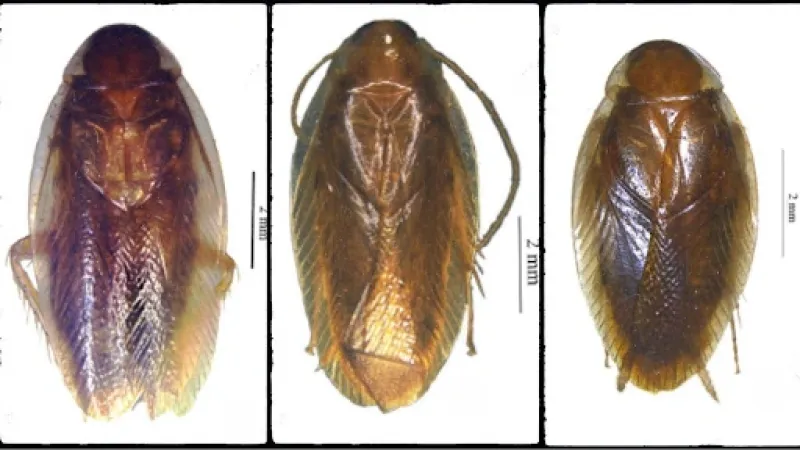
Cockroaches are the unwelcome guests scurrying across our kitchen floor and cupboards. But beyond these common household pests, roaches are a vast and diverse family of species, many of which play vital roles in their ecosystems and remain largely unknown to science. Apart from the ones found in urban areas, including our homes, many members of the roach species are found in jungles.
To find these elusive species, researchers from the Zoological Survey of India embarked on a journey into the dense forests. The specimens were primarily collected at night, using both opportunistic collection (simply finding them) and light traps, which are effective tools for attracting nocturnal insects. Once collected, the specimens were measured and photographed. To observe the delicate features, such as the hind wings, they were temporarily mounted on slides using glycerin and examined under a microscope. For a closer look at the terminal abdominal segments and genital organs, which are often key to species identification, these parts were carefully dissected and analysed.
In a fascinating discovery, the researchers have officially reported the presence of the genus Anaplectoidea in India for the very first time. This group of cockroaches, known for being nocturnal and typically found dwelling in shrubs, was previously thought to inhabit regions primarily across Southeast Asia and China, with 13 known species.
The recent expeditions, however, have not only confirmed their existence in India but have also led to the discovery and description of two entirely new species: Anaplectoidea indica and Anaplectoidea garoensis. The first, A. indica, was found in Jharkhand, while A. garoensis hails from Meghalaya. Adding to the intrigue, the team also collected a female specimen from the Western Ghats in Tamil Nadu that belongs to the same genus but couldn't be identified as a known species due to the lack of male specimens, suggesting yet another potential new species awaiting formal description.
The researchers distinguished these new species from their known relatives by examining a suite of morphological features. For Anaplectoidea indica, the male hind wings presented a unique pattern of five oblique cubitus veins, three pseudocomplete branches (two of which further split at their tips), and two incomplete branches. The appendicular field, a specific section of the wing, was also notably broad, making up 28-29% of the total wing length. Even more tellingly, the male genitalia, specifically the paraproct apices, were spiny, with the left one curving like a hook, and the median phallomere (part of the male reproductive structure) had five distinct spines that grew larger from its tip to its base.
Anaplectoidea garoensis also revealed its unique identity through its anatomy. Its subgenital plate (another part of the reproductive structure) was asymmetrical, with a noticeable protrusion on its right posterolateral corner. Unlike some other species, its styli (small, finger-like projections) were symmetrical and lacked an interstylar lobe. The median phallomere of A. garoensis had a hardened, sclerotized tip and distinctive hair-like bristles emerging from its middle section. These detailed observations are crucial for taxonomists, who are like biological detectives, using these tiny clues to differentiate between species and build the tree of life.
Did you know, cockroaches are one of the oldest insect groups, with fossils dating back over 300 million years, even before dinosaurs? |
This discovery adds a new record that expands the known geographical distribution of the Anaplectoidea. It also adds two new species to the global checklist of this species, contributing to the ongoing effort to document all life on Earth. Cockroaches, despite their reputation, are an ancient and diverse group of insects that play roles in decomposition and as food sources for other animals. By documenting these species, researchers can better monitor environmental changes, identify areas of high biodiversity that need protection, and even uncover potential sources of biomimicry or other scientific insights.
This article was written with the help of generative AI and edited by an editor at Research Matters.





